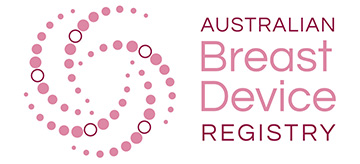About participating in the ABDR
Do I have to contribute my data to the ABDR?
No, you do not have to contribute your data – participation is entirely voluntary.
However, it is important to note that this is an opt-out registry and your details will automatically be included in the ABDR unless you notify us you do not want to participate.
TO OPT OUT : call 1800 998 722 or email abdr@monash.edu
Should you decide to take part you are not required to take any action. If you later change your mind, you are free to withdraw at any time.
I want to contribute my data; what do I have to do?
Speak to the surgeon/clinician, who is performing your surgery and ask whether they contribute to the ABDR. If he/she is contributing at the time of your operation, you will automatically be included.
Why are you including people who have had their breast implants removed?
The purpose of the ABDR is to track and monitor all breast devices. Information from this procedure is important and will help better understand reasons for their removal.
Should I be in the ABDR even if I have not had my breast implant/s replaced?
Yes. All operations involving breast devices are eligible for inclusion in the ABDR, including when a device has been removed without replacement.
Why does the ABDR send out follow-up a questionnaires?
In the near future, some patients may be invited to share periodic feedback on their implant beyond regular surgical clinical follow-up for the PROMs (Patient Reported Outcome Measures) study. The PROMs study is currently on hold while the questionnaire is being refined. Completion of the questionnaires will be completely voluntary.
If I had surgery overseas, can I still provide my details to the ABDR ?
In the future we hope to have the capacity to include details of breast device surgery undertaken overseas. We recommend you keep details of your device surgery, at minimum the device sticker, for your own health records.
Does it cost anything to participate?
No, there is no cost to you to participate in the ABDR. The ABDR is supported by funding from the Australian Government, Department of Health and Aged Care, under the National Clinical Quality Registry Program.
How do I change my personal details with the registry?
Please update your details by completing the forms below and returning them to the ABDR. We do ask for your name and date of birth for verification purposes.
Notification of change of address
Notification of change of name
For any queries about the ABDR, please speak to a member of the team on (03) 9903 0205.
Where do I find out more information about ALCL?
Breast Implant Associated Anaplastic Large Cell Lymphoma (BIA-ALCL) has had a lot of media coverage globally and is the subject of ongoing studies and investigations. ALCL is a rare type of cancer of the immune system. It is not breast cancer.
The TGA (Australian Therapeutic Goods Administration) website has information about ALCL for consumers and health professionals, including a dedicated Breast Implant Hub for easy to read information to support people with concerns about their implants or considering implants. View this TGA video for answers to common questions about BIA-ALCL (Breast Implant Associated – Anaplastic Large Cell Lymphoma).
Alternatively, you are welcome to ring the TGA on 1800 809 361.
If you have a concern about ALCL and your implant/s please speak to your surgeon/clinician or doctor.
About data security
Is my information secure? Who will have access?
Your information is managed according to policies and procedures covering privacy, data access, and governance. The ABDR complies with State and Commonwealth Privacy Laws and is overseen by a Human Research Ethics Committee.
Your information will be housed within Monash University to protect from unauthorised access. Protocols are in place to ensure that the highest levels of privacy and safety are maintained.
Who holds the data?
The data is housed with the Data Custodian, Monash University.
How can I access my information?
Access to the data is strictly controlled by the Steering Committee. Protocols are in place to ensure that the highest levels of privacy and safety are maintained; all Monash employees sign a confidentiality agreement and access to registry data is strictly controlled.
You may apply to access your own breast device information at any time by contacting the ABDR. For reasons of privacy and patient confidentiality, all requests must be compliant with the ABDR Data Access and Publication Policy.
How will my information be used in reports?
A key purpose of the ABDR is to report to stakeholders, such as the Department of Health, Therapeutic Goods Administration (TGA) and device manufacturers on issues of device performance and quality of care. Please note, at no time will you be identifiable in these reports; all public reports will contain aggregate (grouped) data only.
Patients can contact the registry to access details of their breast device/s.
Surgeons/Clinicians may receive reports on their own identifiable patients’ data.
Researchers can apply to the registry to access de-identified data (meaning all personal identifying information is removed) for analysis All requests must be compliant with the ABDR Data Access and Publication Policy and have approval from an ethics committee before de-identified data is shared.
